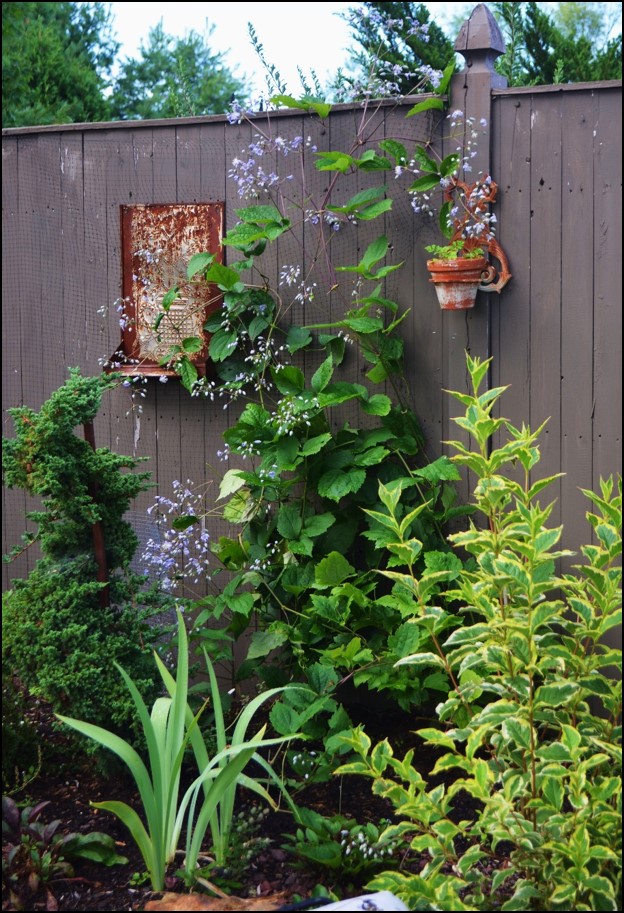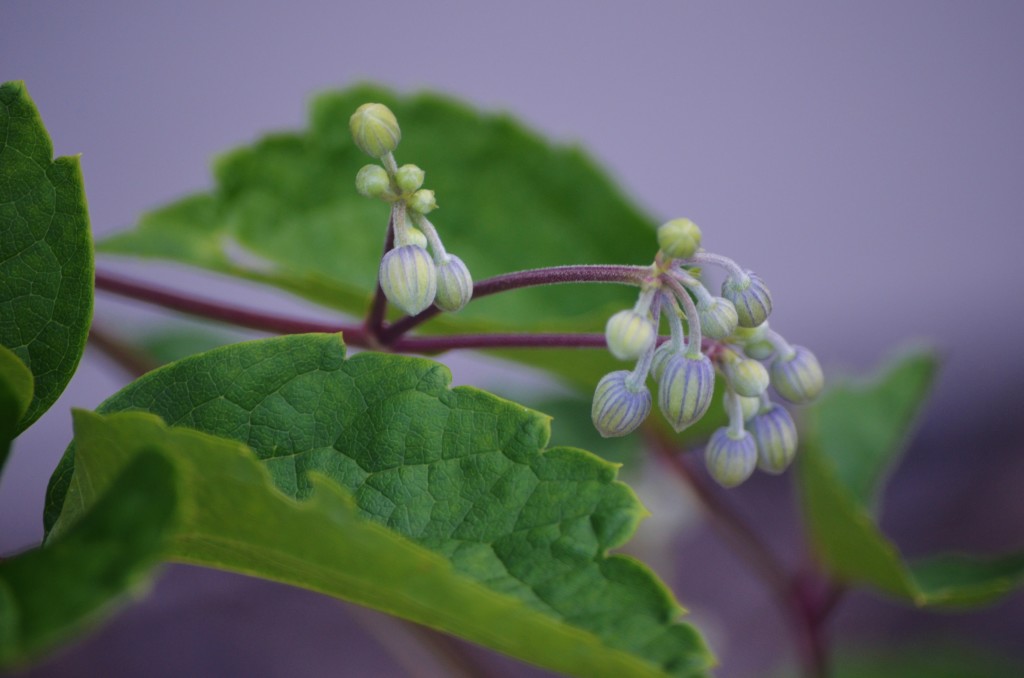now this is a very interesting bunch of clematis given how unlike the typical , or I should say most well known varieties,look. Instead of thin twiney and grabby vines, the shrubby heracleifolias have relatively large leaves, thicker stems, and a extremely lax way of growing ,
They have no modified petioles to climb with so you can either 1.) tie them onto a support 2.) tie the vines to each other to make it look like a shrub ( whence they will resemble a hydrangea bush) or 3.) let them do as they will and sprawl into the garden or better yet down over a wall.
Here in the burrow I do all three . When letting them find their own way into the garden though, i do find I need to help a little with some careful redirection given that they emerge and really get going after many of the herbaceous perennials are filled out and they need to have their position adjusted so they are either in the middle of or under the other plants and no one gets smothered by all that lovely foliage.
What makes growing this group of clematis so easy is that they are more like the herbaceous perennials in the garden and die back to the ground every winter making pruning a cinch. The leaves are untroubled by the browning and dying off that other clematis are notorious for, instead holding on to their lush green coloring all season long , and they tolerate dry conditions very well.
They bloom in the latter part of summer, August into September and their little white, purple or blueish bell or star shaped flowers ( reminiscent of hyacinths) are a welcome sight when the garden need a pick me up,
Clematis stans is one in this group that you need to grow from seed. I have never it seen sold as a plant , but the seeds are easy to germinate and will flower either that year or at the latest in it’s second. The late-great Christopher Llyoyd famously described this clematis as “bearing flowers of a spitefully non contributory off-white skimmed milk coloring”. High praise indeed! It just goes to reaffirm a lesson we all need to hear in this day, that you can adore many parts of a person ( in this case bordering on worship) and still disagree with them on certain things. Given that c. stans is very variable in it’s flower color and fragrance , it is worth sowing a few to see what you get.
This one I started last spring is flowering and looks more lilac colored and is highly fragrant, reminiscent of lilies.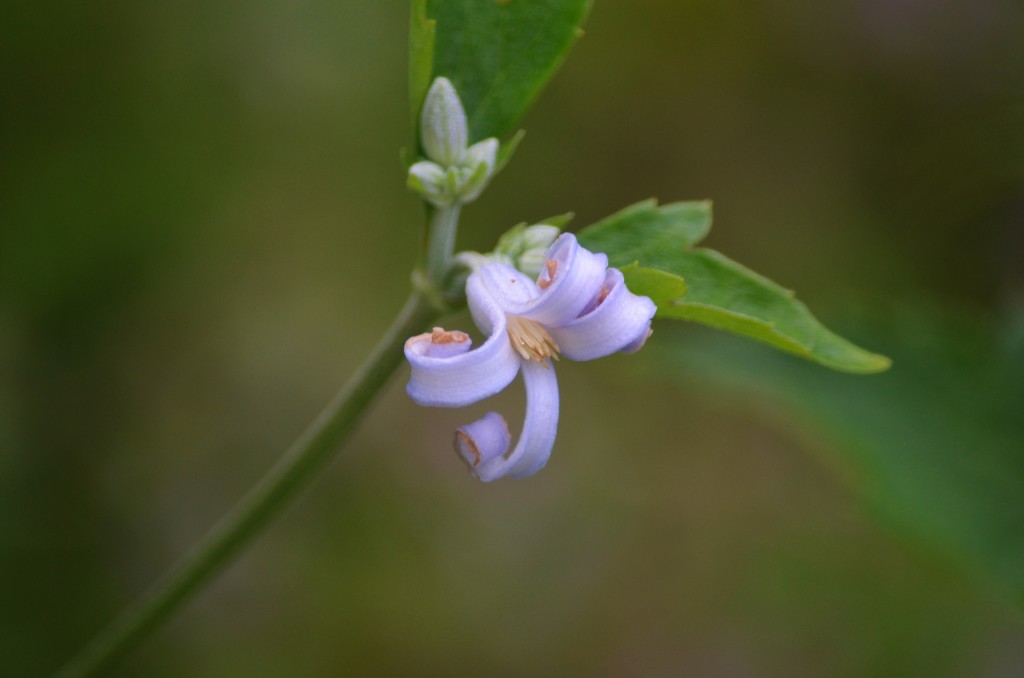
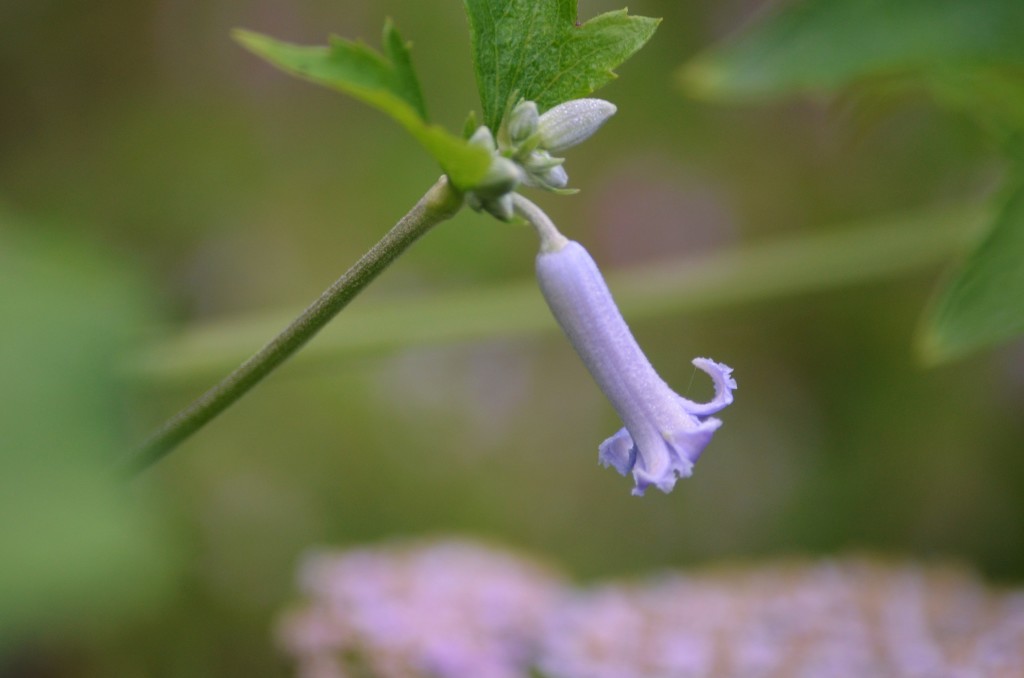
One clematis in this group I recommend all the time is Mrs. Robert Brydon. (click name to read my plant profile )
Mrs. Robert Brydon, with it’s fancy name, is more widely available than the other heracleifolias (I have even seen it at big box stores ) and has the same clean and green foliage as others in this group.
The flowers grow on short stalks in clusters and are lovely both in bud and when open,
the further open the flowers get, the more the stamens protrude in a little mini firework display. This one wins a cuteness award.
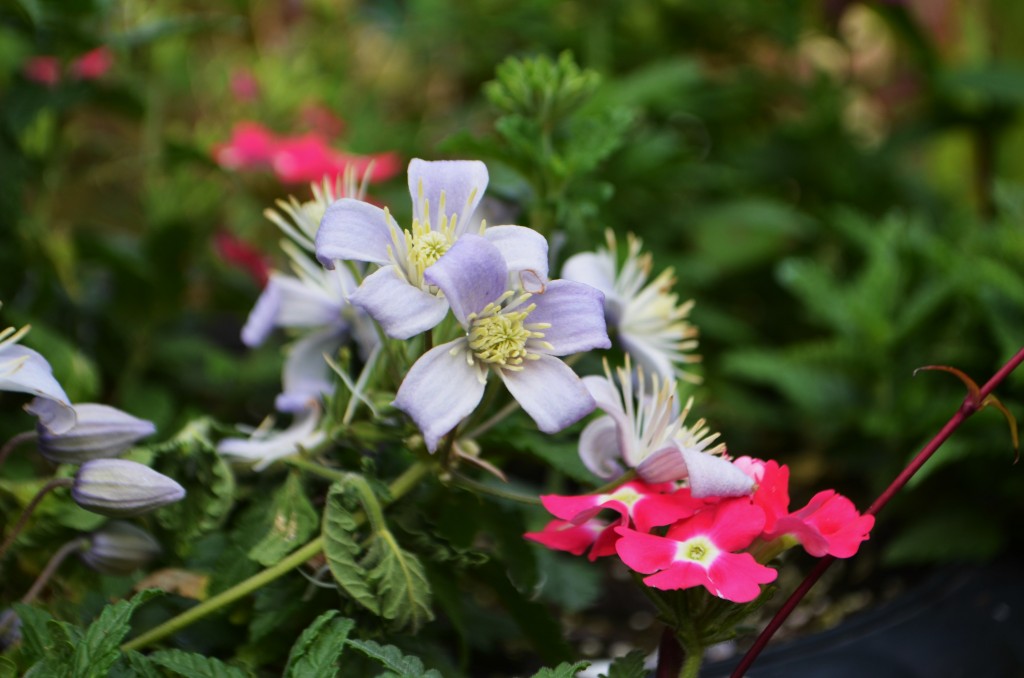
The last clematis in this group I grow is it has petite urn shaped flowers that are said to be highly fragrant, my plant has yet to bloom (although it looks beautiful and healthy) so I will leave you with a tease and a promise to post photo when it does for you to enjoy, a promise I wish could make you about the scent , maybe someday it will bloom on an Open Day.
next week we talk viornas including many of our natives, stay tuned!
